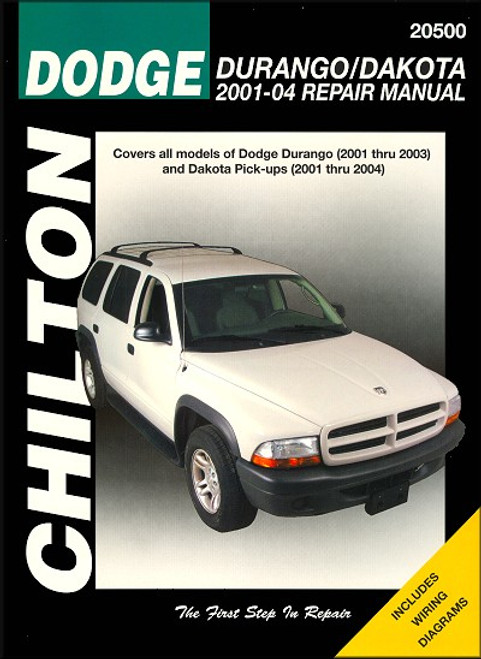The Dodge Ram Pick-ups, Dakota, Durango Repair Manual 1997-2001 by Chilton covers U.S. and Canadian models, including 1500, 2500, and 3500 pickup trucks 1997-2001, Dakota and Durango 1997-2000; 2- and 4-wheel drive, gasoline and Cummins diesel engines, with distributorless ignition systems.
Book Excerpt: 1997-2001 Dodge Ram Pick-ups, Dakota, Durango Repair Manual CLUTCH: UNDERSTANDING THE CLUTCH
Subject: 1997, 1998, 1999, 2000, 2001 Dodge Ram Pick-ups, Dakota, Durango service, maintenance, repair. ISBN-10: 1563926989 | ISBN-13: 9781563926983
TABLE of CONTENTS:
Book Excerpt: 1997-2001 Dodge Ram Pick-ups, Dakota, Durango Repair Manual CLUTCH: UNDERSTANDING THE CLUTCH
The purpose of the clutch is to disconnect and connect engine power at the transmission. A vehicle at rest requires a lot of engine torque to get all that weight moving. An internal combustion engine does not develop a high starting torque (unlike steam engine) so it must be allowed to operate without any load until it builds up enough torque to move the vehicle. To a point, torque increases with engine rpm. The clutch allows the engine to build up torque by physically disconnecting the engine from the transmission, relieving the engine of any load or resistance. The transfer of engine power to the transmission (the load) must be smooth and gradual; if it weren't, drive line components would wear out or break quickly. This gradual power transfer is made possible by gradually releasing the clutch pedal. The clutch disc and pressure plate are the connecting link between the engine and transmission. When the clutch pedal is released, the disc and plate contact each other (the clutch is engaged) physically joining the engine and transmission. When the pedal is pushed in, the disc and plate separate (the clutch is disengaged) disconnecting the engine from the transmission.
Subject: 1997, 1998, 1999, 2000, 2001 Dodge Ram Pick-ups, Dakota, Durango service, maintenance, repair. ISBN-10: 1563926989 | ISBN-13: 9781563926983
TABLE of CONTENTS:
Introduction: About this manual | Introduction | Vehicle identification numbers | Maintenance techniques, tools and working facilities | Buying parts | Jacking and towing | Booster battery (jump) starting | Conversion factors | Automotive chemicals and lubricants | Safety first! | Troubleshooting
- Tune-up and routine maintenance
- Engine and overhaul procedures
- 2.5L OHV inline 4-cylinder engine
- 3.9L OHV V6 engine
- 4.7L SOHC V8 engine
- 5.2L OHV V8 engine
- 5.9L OHV V8 engine
- 5.9L turbo-diesel inline 6-cylinder engine (12- and 24-valve)
- 8.0L OHV V10 engine
- Engine reconditioning
- Exhaust system
- Cooling, heating and air-conditioning systems
- Fuel and exhaust systems
- Engine electrical systems
- Emissions control systems
- Trouble codes
- Vacuum diagrams
- Manual transmission
- Clutch
- Automatic transmission
- Transfer case
- Driveline
- Front drive axle
- Rear axle
- Brakes (ABS)
- Suspension and steering systems
- Exterior, Interior
- Chassis electrical system
- Air bag, instruments, switches, trailer wiring, wipers
- Wiring diagrams











Above: Nicholas Ellis sent us a great photo of his 1998 Dodge Ram 1500 5.2L V8 in action during a pig roast mud bog. The truck features an aFe intake, full Gibson exhaust system, and free-spin front axle hubs. Lift kit is a Rough Country 7" with a 3" body lift. Oxford, CT.